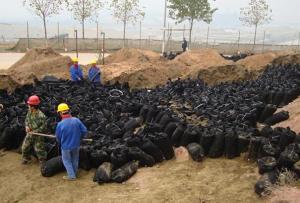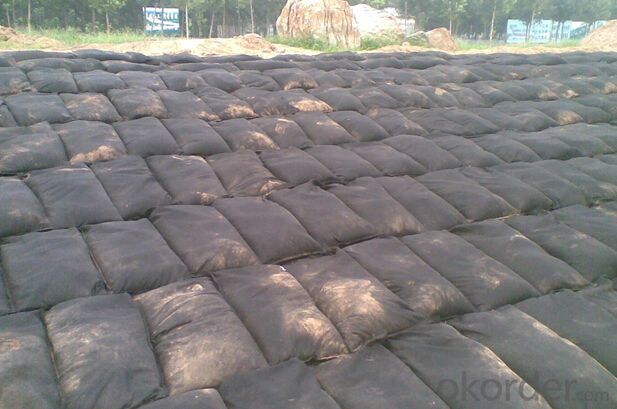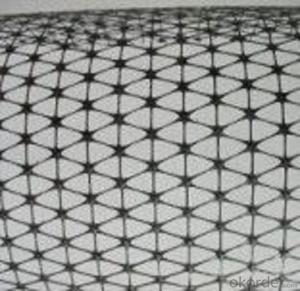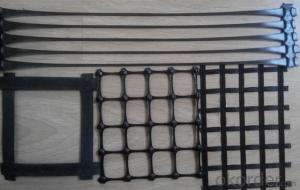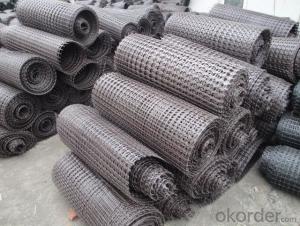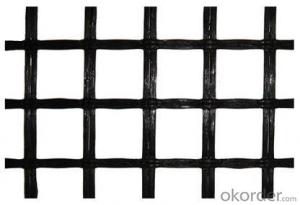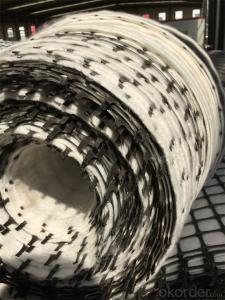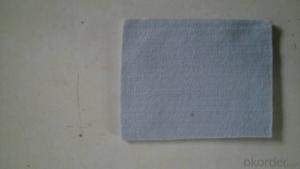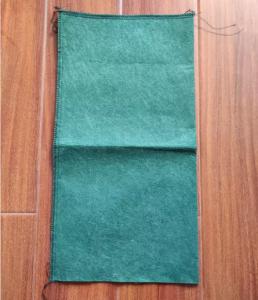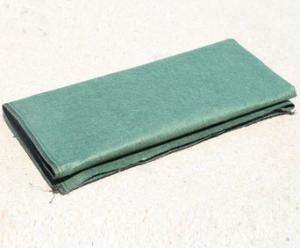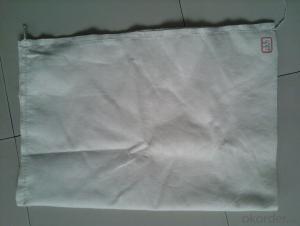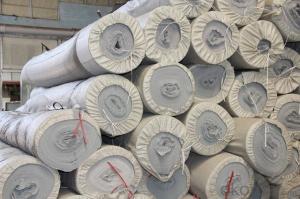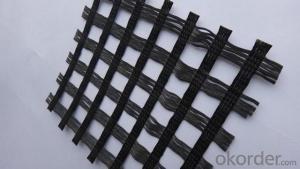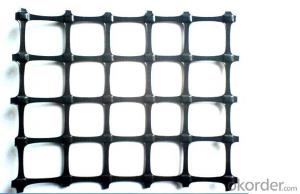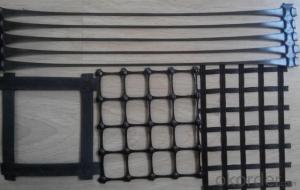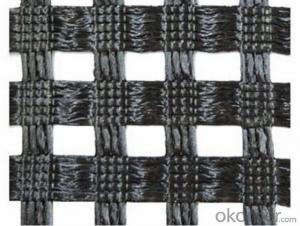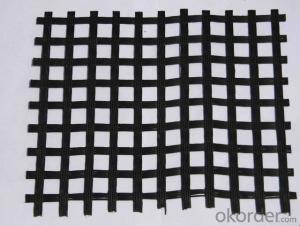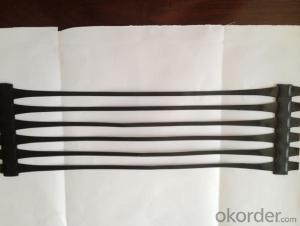Geogrids Australia Pet Geotextile Bag Sand Bag for Bank of River
- Loading Port:
- Tianjin
- Payment Terms:
- TT or LC
- Min Order Qty:
- 1000 m²
- Supply Capability:
- 1900000 m²/month
OKorder Service Pledge
OKorder Financial Service
You Might Also Like
Non Woven Geotextile Bag
Product Description of PET Geotextile Bag Sand Bag for Bank of River
Made by polyester (PET) or polypropylene (PP) fiber as the raw material, making double sides ironed and pressed needle-punched non-woven geotextile through the spun bonded technology, and then processed to bag with specified dimension, fill soil, sand and fertilizer etc. padding into bag according to local soil conditions and scientific proportion, and then spray seeds which are suitable for local climate, form a new product which could restore or create a new ecosystem.
Specification of PET Geotextile Bag Sand Bag for Bank of River:
Greige cloth for ecological bag is 150~180 GSM, the physical dimension for ecological bag will be determined based upon the project requirement.
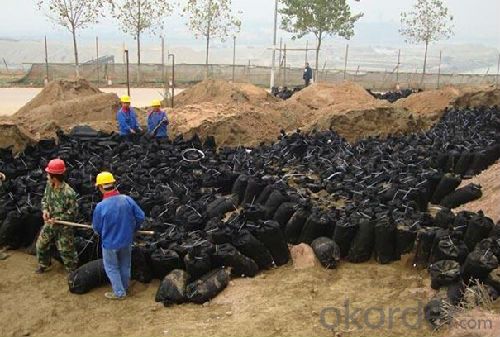
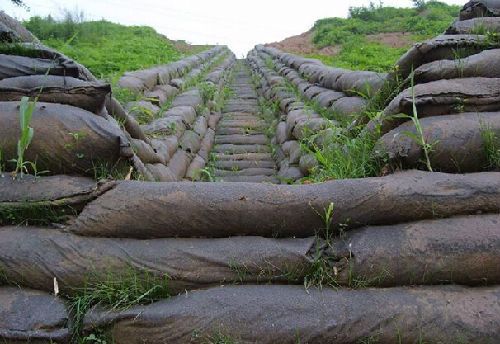
Property of PET Geotextile Bag Sand Bag for Bank of River:
1. With the advantages of anti-UV, anti-aging, non-toxic, no combustion-supporting, bag rip no stretch;
2. Bags are soft with good integral, permeability is strong and scouring resistance, good durable performance;
3. Good plasticity and construction process is simple;
4. Strong corrosion resistance, resistance to microbes, high s oil stability, easy for plant growth;
5. Comprehensive functions of environmental protection, ecological afforestation, soil and water conservation, forming of ecological slope protection system.
Application of PET Geotextile Bag Sand Bag for Bank of River:
Commonly used in barren hills, mining repair, highway and railway slope greening, riverbanks slope protection, inland waterway improvement etc. projects.
Packaging & Shipping
Items per Carton: 50 Pieces/Pack
Package Measurements: 50X45X120 cm
Gross Weight: 50.0 kg
Package Type: 50bags in one package or as request
- Q: What are the differences between geogrids and geocomposites?
- Geogrids and geocomposites are both used in soil stabilization and reinforcement applications, but they have some key differences. Geogrids are typically made from high-strength polymers or fiberglass, and they have a grid-like structure with open spaces. They are designed to provide tensile strength and distribute loads across a wider area. Geogrids are mainly used for reinforcing soils, retaining walls, and roadways. On the other hand, geocomposites are multi-layered materials that combine different geosynthetic components. They usually consist of a geotextile fabric or membrane bonded to a geogrid or geonet layer. Geocomposites offer a combination of functions such as filtration, drainage, separation, and reinforcement. They are commonly used in applications like erosion control, landfill engineering, and drainage systems. In summary, while geogrids focus on reinforcement and load distribution, geocomposites offer a more versatile solution by combining multiple functions in a single product.
- Q: What is the recommended geogrid aperture shape for specific applications?
- The recommended geogrid aperture shape for specific applications varies depending on the specific requirements of the project. However, commonly used shapes include square, rectangular, and hexagonal apertures. These shapes provide different levels of stability, soil confinement, and load distribution, allowing engineers to select the most suitable option based on factors such as soil type, slope angle, and anticipated loads.
- Q: What is the recommended geogrid roll width for specific applications?
- The recommended geogrid roll width for specific applications can vary depending on factors such as the type of soil, the slope angle, and the desired level of reinforcing strength. It is best to consult with a geotechnical engineer or supplier who can assess the specific project requirements and provide a suitable recommendation.
- Q: How do geogrids reduce the amount of fill required for construction?
- Geogrids reduce the amount of fill required for construction by providing reinforcement and stability to the soil, allowing for a steeper slope or thinner layer of fill to be used. This is achieved through the interlocking design of the geogrid, which distributes the load more evenly, minimizing settlement and preventing soil movement.
- Q: How do geogrids improve the performance of geotextile sediment retention tubes?
- Geogrids improve the performance of geotextile sediment retention tubes by providing additional structural support and stability. They reinforce the geotextile fabric, preventing it from sagging or collapsing under the weight of sediment and water pressure. This reinforcement helps the tubes maintain their shape and integrity, enhancing their effectiveness in retaining sediment and preventing erosion.
- Q: I would like to ask the geotechnical engineering of highway engineering, geogrid raw materials for the conventional test items, parameters?
- The conventional detection of geogrid includes: appearance, physical properties (including: Determination of mass per unit area, amplitude measurement, mesh size measurement)
- Q: Can geogrids be used in shoreline protection projects?
- Yes, geogrids can be used in shoreline protection projects. Geogrids are often used to reinforce soil and prevent erosion in various applications, including shoreline protection. By providing additional strength and stability to the soil, geogrids can help to prevent the erosion of the shoreline and protect it from the damaging effects of waves and currents.
- Q: Can geogrids be used in retaining walls for recreational areas?
- Yes, geogrids can be used in retaining walls for recreational areas. Geogrids are commonly used in retaining walls to reinforce and stabilize the soil, providing additional strength and stability to the structure. This is particularly important in recreational areas where safety is a priority, as geogrids help prevent soil erosion and potential collapse of the retaining wall.
- Q: What are the design considerations for geogrid installation?
- Some of the key design considerations for geogrid installation include selecting the appropriate type and strength of geogrid material based on the specific application and soil conditions, determining the correct spacing and orientation of the geogrid layers, ensuring proper soil compaction and preparation before installation, and considering factors such as slope stability, load bearing capacity, and drainage requirements. Additionally, proper anchoring and connection techniques, as well as proper quality control and monitoring during installation, are essential for a successful geogrid installation.
- Q: How do geogrids prevent differential settlement?
- Geogrids prevent differential settlement by distributing the load more evenly across a soil mass, reducing the potential for differential settlement. They provide reinforcement and increase the soil's overall stability, preventing uneven settlement and ensuring a more uniform distribution of stress.
Send your message to us
Geogrids Australia Pet Geotextile Bag Sand Bag for Bank of River
- Loading Port:
- Tianjin
- Payment Terms:
- TT or LC
- Min Order Qty:
- 1000 m²
- Supply Capability:
- 1900000 m²/month
OKorder Service Pledge
OKorder Financial Service
Similar products
Hot products
Hot Searches
Related keywords
